In Central Otago the locals are becoming increasingly proud of their giant lizards.
“Reptiles are our megafauna,” says Grant Norbury, a Landcare Research scientist based in Alexandra and chair of the Central Otago Ecological Trust, which created a small fenced sanctuary and released the first rare lizards there back in 2009.
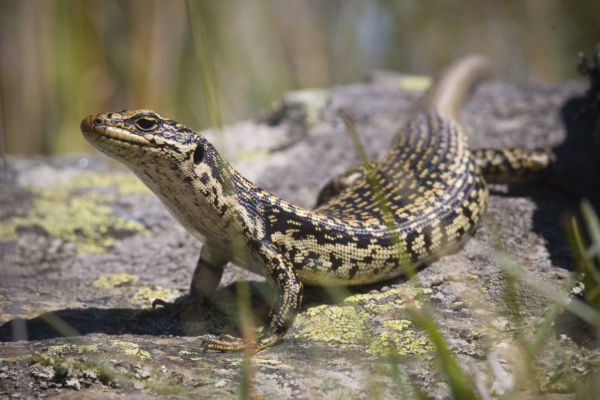
But the reptiles weren’t always so well known or so popular.
“The problem with Central Otago,” Grant admits, “is that it’s so depleted. People’s interest in the environment is subdued because there’s little left to relate to. The bird and plant life are highly invaded and the lizards are depleted. Most of the remnant threatened species are micro,” he adds, “The plants and invertebrates etc, they’re small and cryptic. Our dryland ecosystems are a very different part of New Zealand.”
Small and hidden is hard to get excited about, perhaps. But, with the establishment of the Mokomoko Dryland Sanctuary, awareness is increasing and perceptions are changing.
“The most rewarding thing about the sanctuary is that people are more engaged,” Grant says. “There’s now a big emblem of a skink on the highway, there are reptile paintings, sculptures. The Alexandra Museum has traditionally been about history and farming, but now it has live animals on display and it’s looking at building an outdoor enclosure for lizards. A local school even entered a skink float in the Alexandra Blossom Festival a few years back.”
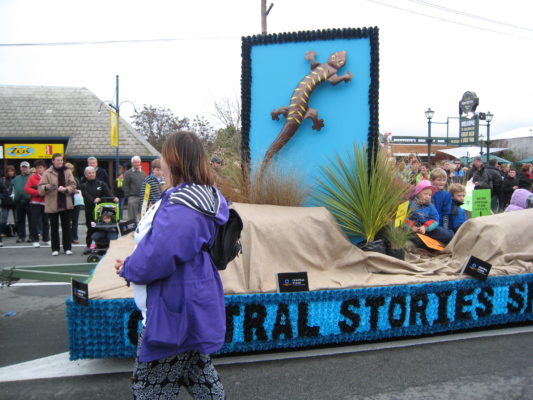
Grant has just been showing lizards to 30 enthusiastic school children from the local Terrace Primary School, one of many such school visits to meet Central’s iconic mega-beasts. The Otago Skink and the Grand Skink, the first reptiles to be released in the sanctuary, are not only two of New Zealand’s largest lizards, but also some of our rarest. They’re only found in Central Otago and now occupy less than 10% of their former range.
“The kids are much more switched on than we give them credit for,” Grant says. “One of their questions today was why these lizards don’t just walk somewhere else to survive, like Canterbury. It’s a good question.”
The answer, Grant reckons, probably lies in the rocks.
“The skinks are wedded to Central’s schist. It’s different to other rocks,” he explains, “It’s very layered and fractured horizontally, so the skinks have deep cracks where they can escape the heat and the cold.”
It can get very hot – and very cold – in Central Otago. The region is known for its record-breaking temperature extremes. Life can’t be easy for cold-blooded reptiles.
Grand Skinks and Otago Skinks are also slow-growing and slow breeding, taking 4-5 years to reach sexual maturity and producing only 2 young per year on average, only half of which make it to reproductive age. It makes them very vulnerable to population decline and to introduced predators.
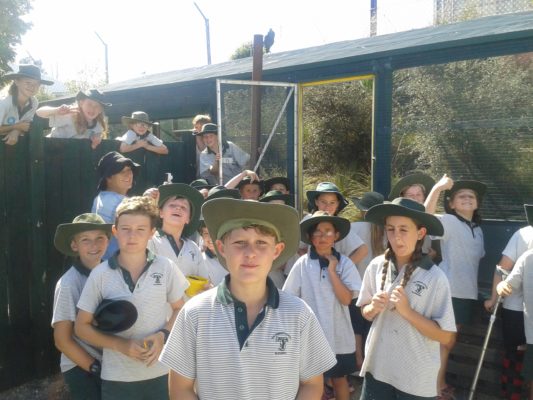
“Central Otago is prone to pests of every kind,” Grant says.
Hence the need for a fenced sanctuary.
Grant and six other local trustees, along with several advisors, set up the Central Otago Ecological Trust in 2005 with the aim of restoring the lizard community. They initially built “the smallest sanctuary fence in New Zealand” – just 0.3 hectares – as an experiment to see if lizards would survive in an area where they were known to live in the past.
“We released some captive bred Otago Skinks and initially it went well. Then mice got in,” Grant says. “The lizards can reach up to a foot (30cm) long, but mice were seen attacking them. The more we look at mice and native species, the more problems we find,” he adds.
And in Central Otago’s modified dryland ecosystem, every year is a mast year for mice, compared with the heavy seedfalls that occur once every few years in native tussock grasslands.
“The grasses here are mostly introduced species bred for pastoral farming,” says Grant, “so they seed heavily every year and the mice are abundant every year.”
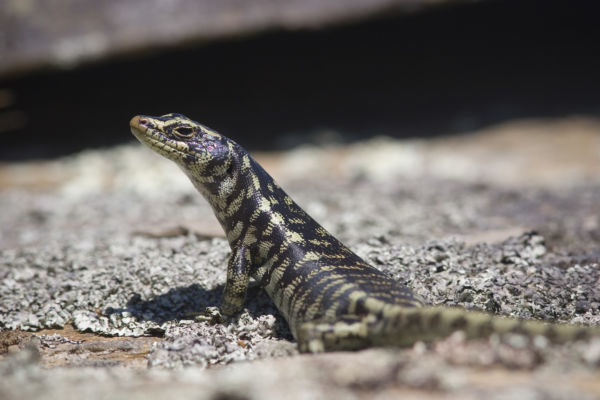
The mice have since been eradicated from within the fence and, in addition to the 0.3 hectare trial plot, a bigger, 14 hectare fenced sanctuary has now been created for full translocations/reintroductions. It’s taken years of volunteer work and fundraising.
“You’ve got to be patient,” Grant admits. “If I was to make any recommendation to other community groups, it would be ‘Don’t be in a hurry’.”
Pest eradication and habitat restoration have been carried out in the larger fenced sanctuary and the plan is to begin releasing lizards there in February/March 2018.
“14 hectares is still small – but you can fit a lot of lizards in,” says Grant, “Grand and Otago Skinks in the eastern part of their former range have been doing well in the wild with DOC’s predator control, but the skinks in the western part live in difficult country and aren’t protected. DOC wants to put Western Grand and Otago Skinks in the sanctuary.”
And this time – with a larger sanctuary – it won’t just be slinky, smooth-skinned skinks that will be given a safe haven. Some of their rough-scaled gecko cousins will be taking up residence too.
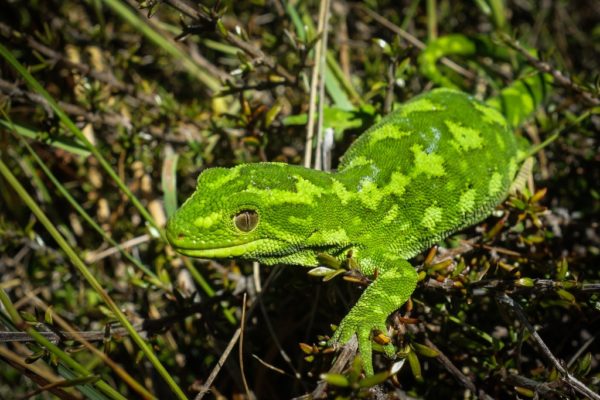
“We’ve got a DOC permit to translocate Jewelled Geckos from the highlands of Central Otago, from the Lammermoor Range,” says Grant. “We’re contracting a specialist to find them. Carey Knox is an expert and he considers the source population to be sufficiently robust to withstand removal of some individuals. We’ve no intention of depleting them.”
The Jewelled Geckos are another ‘test case’ for the Trust.
“They’re from the high country, where there’s tussock and shrubs and temperatures are cool. We’re moving them to an inland valley where it’s both hot and cold, but Carey thinks the release site looks good.”
In another year or so, the Trust hopes to reintroduce Green Skinks.
“That would mean 4 locally extinct species reintroduced within a few years,” says Grant, “Grand and Otago Skinks. Jewelled Geckos and Green Skinks. Later we might look at Mountain Tree Weta and Tuatara.”
Alongside the reintroductions, a lot of habitat has been recovered but there’s more work to be done.
“There is ongoing weed control and we’re adding native plants back into the system. There’s now a community group in town propagating native plants and we have field days for planting, weeding and so on,” says Grant.
Education is also something Grant would like to see more of. The number of visiting schools shows how much interest there is in the community for Central’s unique ‘megafauna’, but it’s all things that trustees have to manage in their own time.
“There’s so much untapped potential in Central,” says Grant. “And it’s an incredibly exciting time to be a wildlife manager or researcher in New Zealand. The predator free initiative – it’s unprecedented!”

